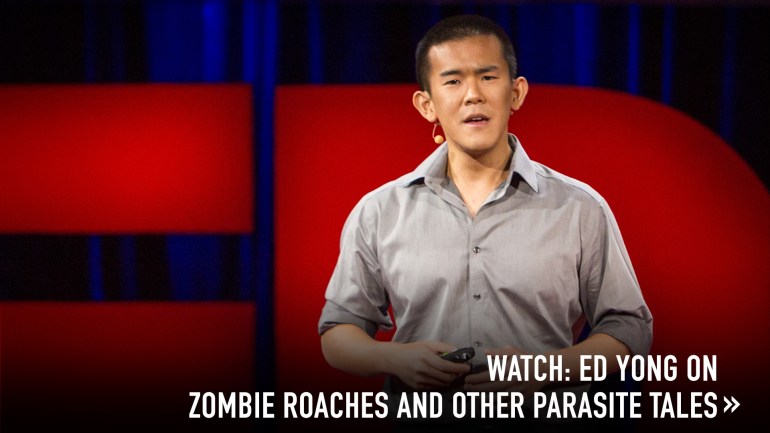
Just like a human being, a house or office has its own microbiome, with good and bad microorganisms. One researcher has a targeted idea: to customize our spaces with the right microbes.
Right before the University of Chicago’s Center for Care and Discovery opened in 2013, a team of researchers — overseen by Jack Gilbert, microbial researcher and director of the Microbiome Center at the University of Chicago — went through the eerily empty hallways, armed with bags of Q-tips. None of the rooms were home to humans yet; their only residents were microbes, which the team was there to collect. They swabbed the pristine floors, the gleaming bedrails, the perfectly folded sheets. They collected samples from light switches, door handles, air vents and more. Finally, they fitted the rooms with data loggers to measure light, temperature, humidity and air pressure, carbon dioxide monitors that would automatically record if a room was occupied, and infrared sensors that could tell when people entered or left. After the hospital opened, the team collected weekly samples.
Just as others have catalogued the developing microbiome of a newborn baby, Gilbert has, for the first time, catalogued the developing microbiome of a newborn building. His team is analyzing the data to work out how the presence of humans has changed the building’s microbial character and whether those environmental microbes have flowed back into the occupants. Nowhere are those questions more important than in a hospital. There, the flow of microbes can mean life or death — a lot of deaths. In the developed world, around five to ten percent of people who check into hospitals and other health-care institutions pick up an infection during their stay, falling ill in the very places that are meant to make them healthier. In the United States alone, this means around 1.7 million infections and 90,000 deaths a year.
Ever since the 1860s, when Joseph Lister instigated sterile techniques in his hospital, cleaning regimes have helped curb the spread of pathogens. But just as we have gone overboard in taking unnecessary antibiotics or lathering ourselves in antibacterial sanitizers, we have also gone too far in cleaning our buildings, even our hospitals. As an example, one US hospital recently spent around $700,000 to install flooring that was impregnated with antibacterial substances, despite no evidence that such measures work. They might even make things worse. Perhaps the quest to sterilize our hospitals has created dysbiosis in the microbiomes of our buildings. By removing harmless bacteria that would otherwise impede the growth of pathogens, perhaps we have inadvertently constructed a more dangerous ecosystem.
Researcher Gilbert has visions of adding microbial spheres to neonatal intensive care units, to expose babies to a ‘rich microbial ecosystem’
Rather than trying to exclude microbes from our buildings and public spaces, perhaps it is time to lay the welcome mat out for them. One of Gilbert’s many microbial ideas: to deliberately seed buildings with bacteria. The microbes won’t be sprayed or plastered onto walls. Instead, they’ll come caged within tiny plastic spheres, created by engineer Ramille Shah. She will use three-dimensional printers to fashion balls that contain a warren of microscopic nooks and crannies. Gilbert will then impregnate these with useful bacteria like Clostridia, which digests fiber and quenches inflammation, as well as nutrients that nourish those microbes.
These bacteria should then jump over to anyone who interacts with the spheres. Gilbert is testing this with germ-free mice. He wants to see if the bacteria are stable in their cages, if they jump into rodents that play with the balls, if they last in their new hosts and if they can cure the rodents of inflammatory diseases. If that works, Gilbert has visions of testing the microbial spheres in office blocks or hospital wards. He imagines adding them to the cots in neonatal intensive care units, so that the infants would “be constantly exposed to a rich microbial ecosystem that we’ve designed to be beneficial.” He adds, “I want to create 3D-printable teething toys, too. You can imagine children playing with these.”
These spheres are effectively a different take on probiotics — a way of delivering beneficial microbes not through yogurt drinks or nutritional supplements, but via an animal’s surroundings. “I don’t want to put the microbes in their food and shove it down their gullet,” he says. “I want the microbes to interact with their nasal membranes, their mouths and their hands. I want them to experience that microbiome in a more natural way.”
Microbes that prevent dandruff and dermatitis might be used to stop mold from developing in homes
But Gilbert is interested in implementing his ideas on a much larger scale. He wants to shape the microbiomes of entire cities, starting with Chicago. He has been talking to architect Luke Leung, who designed the world’s tallest building, Dubai’s Burj Khalifa. Since meeting Gilbert, Leung has also become something of a microbiome fanatic. In several of his buildings, Leung has routed the ventilation system so that it flows through a wall of plants, which not only pleases the eye but also filters the air. To him, Gilbert’s idea of lacing walls with microbial spheres — which I’ve suggested should be called Baccy Balls — makes perfect sense. Karen Weigert, Chicago’s chief sustainability officer, has also become a microbiome enthusiast.
The four of us — Leung, Gilbert, Weigert and me — are meeting for lunch at a Chicago restaurant overlooking Lake Michigan. Like Leung, Weigert is excited about using bacteria in architecture, and she asks Gilbert if the Baccy Balls would work in low-income housing, as well as in skyscrapers. Yes, he says. He wants to make them as cheaply as possible.
She switches the conversation to Chicago’s perennial problem with flooding. The sewer system backs up a lot and will probably do so more and more as the global climate changes. “Is there something we can do to manage flooding, or after-effects like mold?” she asks. “There actually is,” says Gilbert.
In a different project, he has been working with L’Oréal to identify bacteria that can prevent dandruff and dermatitis, by stopping fungi from germinating on the scalp. These microbes could form the basis of anti-dandruff probiotic shampoos, but they could also be used to create “micro-wetlands” that stop flooded homes from becoming overrun by mold. So if a home floods, fungi would get a bonanza of water, but also face a bloom of antifungal microbes. “You’d get automatic built-in mold control,” says Gilbert.
“So how real is all of this? Where are you with it?” asks Weigert.
“We’ve got the fungal control agents, and we’re trying to work out how to implant them into plastics,” says Gilbert. “We’re probably two or three years off from having something that we’d feel comfortable inserting in somebody’s home — someone who wasn’t a colleague. And it may be three or four years before we have something reliable we can roll out.”
“We’ve been getting pretty good at killing bacteria, but we want to revitalize that relationship,” Leung says. “We want to understand how the bacteria can help us in the built environment.”
It’s the start of a new era, when people are finally able to embrace the microbial world.
Manipulating the microbiomes of buildings and cities is just the start of Gilbert’s ambitions. As well as the hospital and aquarium initiatives, he is also studying the microbiomes of a local gym and a college dorm. He and microbial researcher Rob Knight at UC San Diego (TED Talk: How our microbes make us who we are) are looking into forensic applications. He is studying the microbiomes of a wastewater treatment plant, floodplains, oil-contaminated waters in the Gulf of Mexico, prairies, a neonatal intensive care unit and Merlot grapes. He is studying how gut microbes change over the course of the day and whether that affects our risk of becoming fat. He is analyzing samples from several dozen wild baboons to see if the females that are most successful at rearing young have anything distinctive in their microbiomes.
Finally, together with Knight and Janet Jansson (of the Pacific Northwest National Laboratory), Gilbert is coordinating the Earth Microbiome Project — a breathtakingly ambitious plan to take full stock of the planet’s microbes. The team are making contact with people who work on oceans or grasslands or floodplains, and persuading them to share their samples and their data. Ultimately, they want to be able to predict the kinds of microbes that live in a given ecosystem by plugging in basic factors like temperature, vegetation, wind speed or levels of sunlight. And they want to predict how those species would respond to environmental changes, like the flooding of a river, or the passage from night to day. As goals go, it is ludicrously ambitious; some would say, unachievably so. But Gilbert and his colleagues are undeterred.
Now is a time for thinking big. It’s a time when families can be persuaded to swab their houses for researchers, when aquarium managers are as concerned about the invisible life in their waters as they are about the charismatic dolphins, when hospitals are seriously considering adding microbes to walls rather than removing them. It’s the start of a new era, when people are finally ready to embrace the microbial world.
Excerpted from the new book I Contain Multitudes: The Microbes Within Us and a Grander View on Life by Ed Yong. Copyright 2016 Ed Yong. Reprinted with permission from Ecco, an imprint of HarperCollins Publishers.









